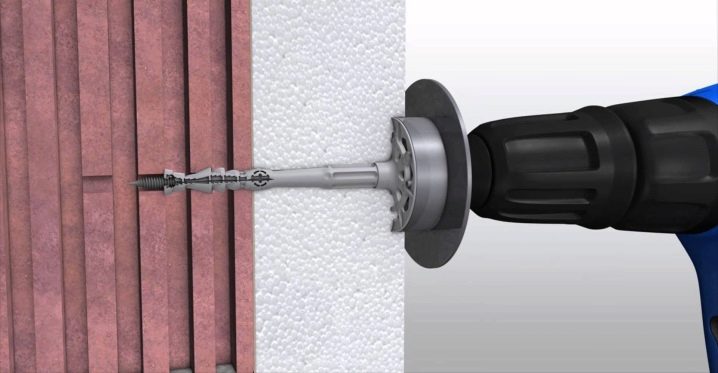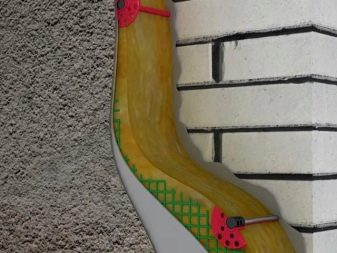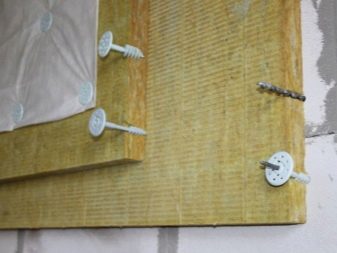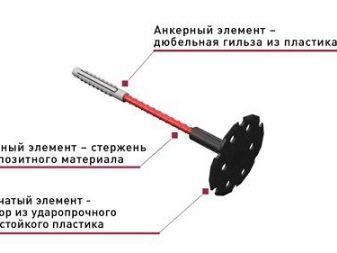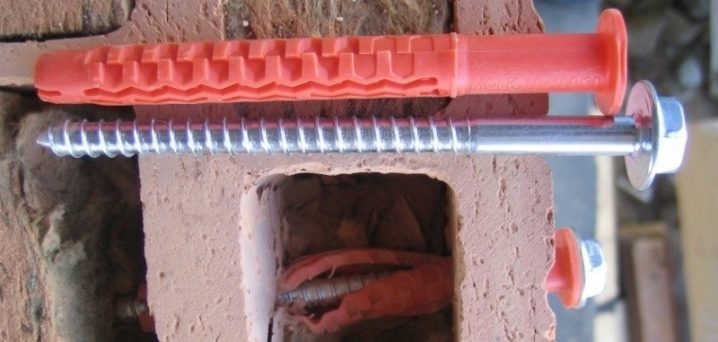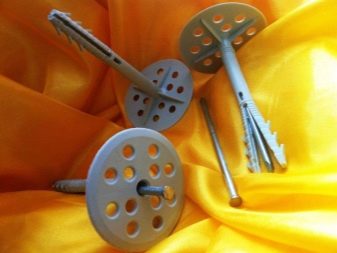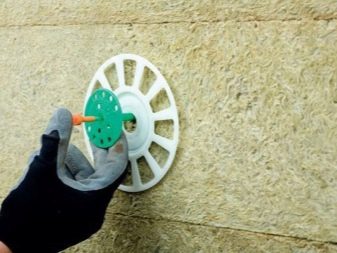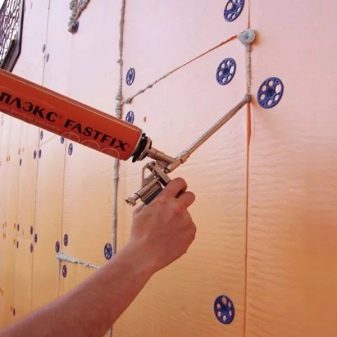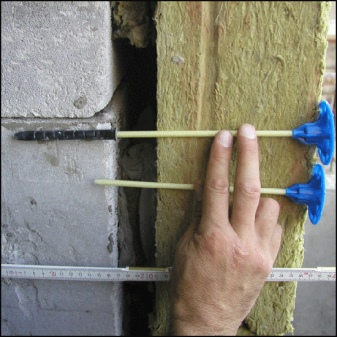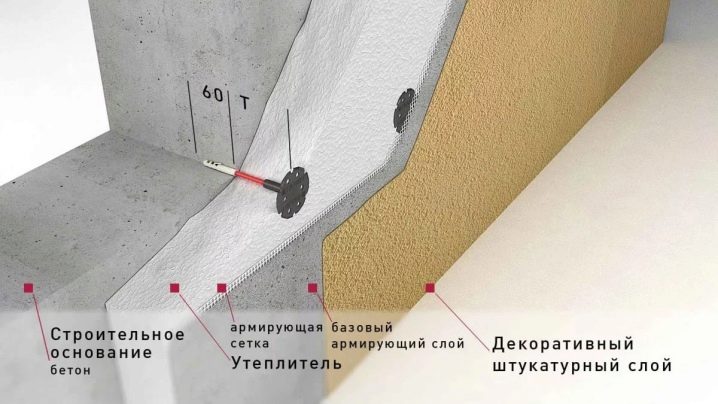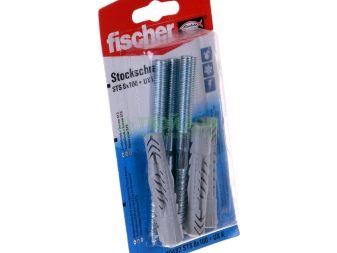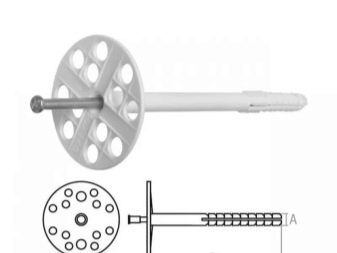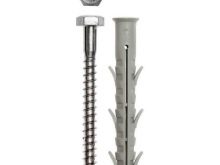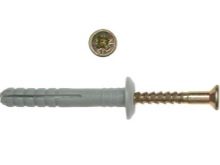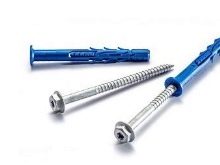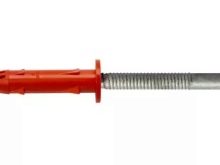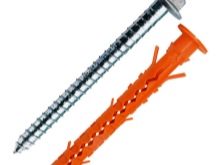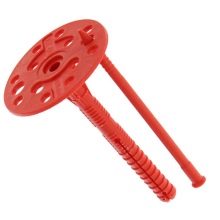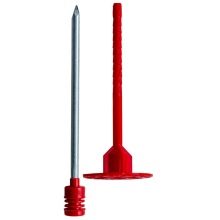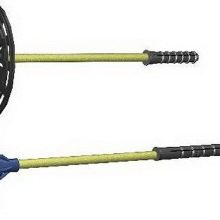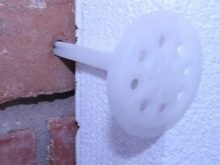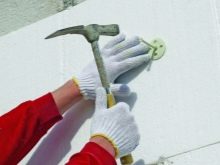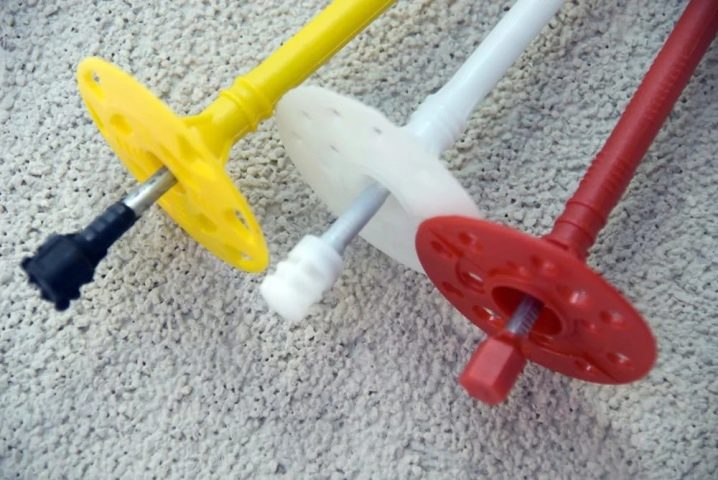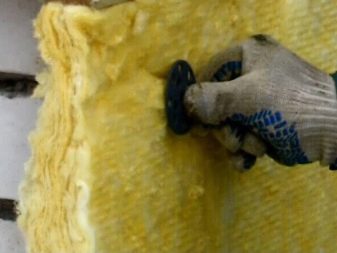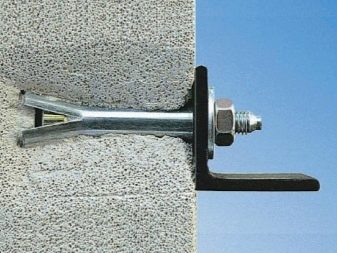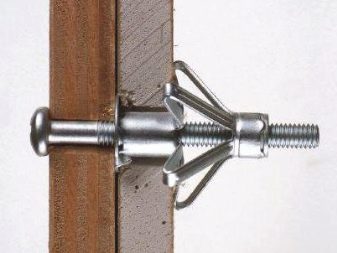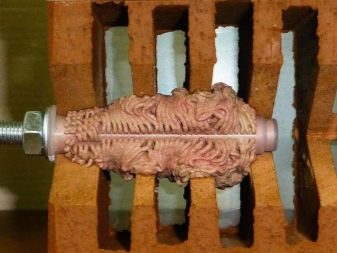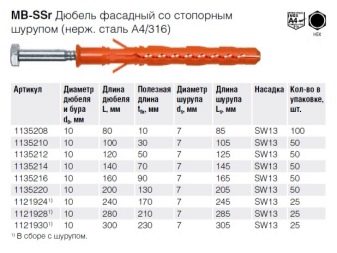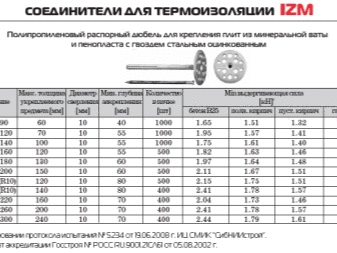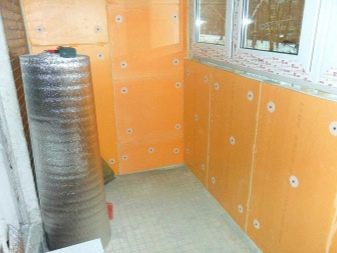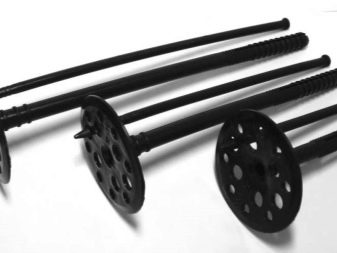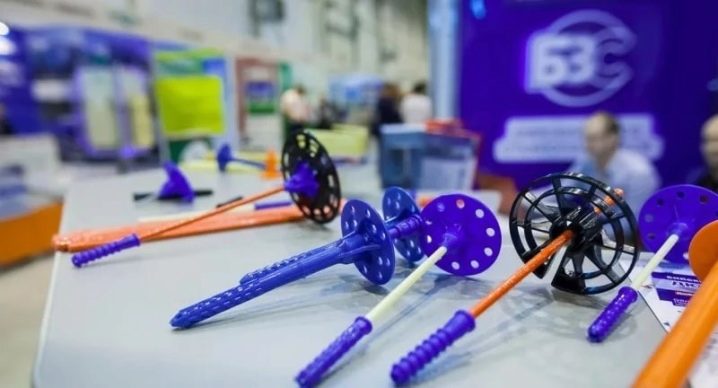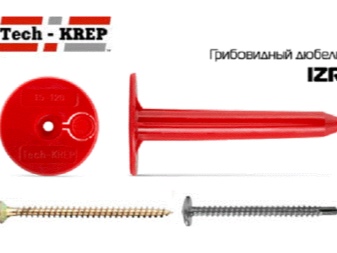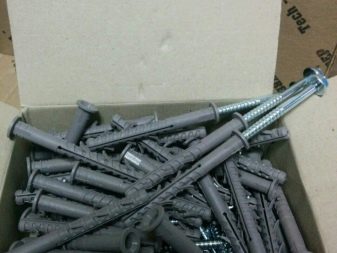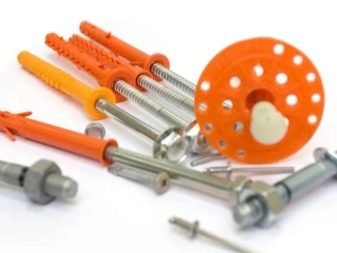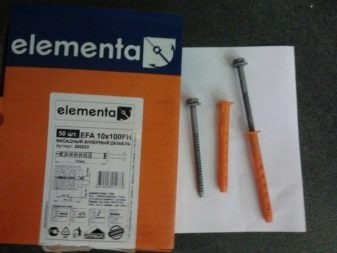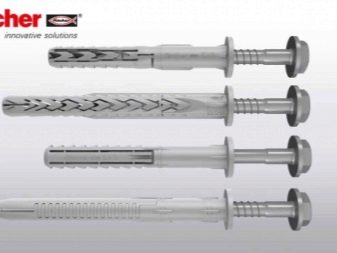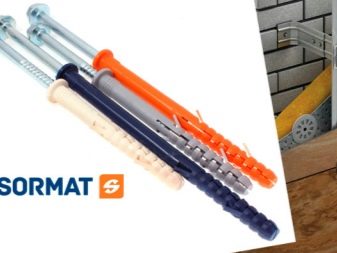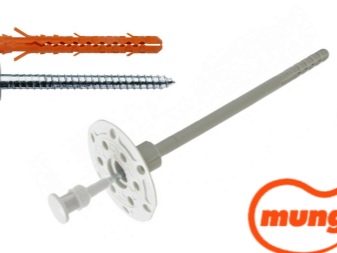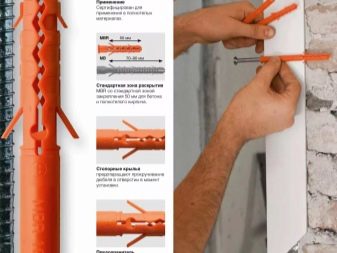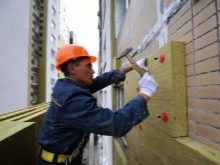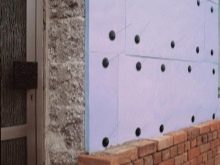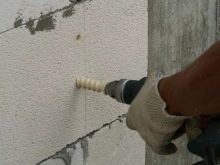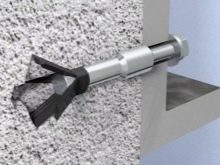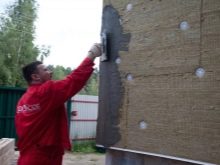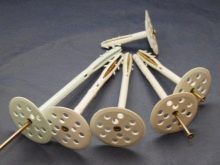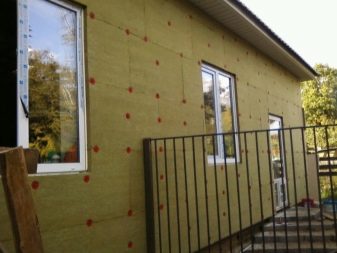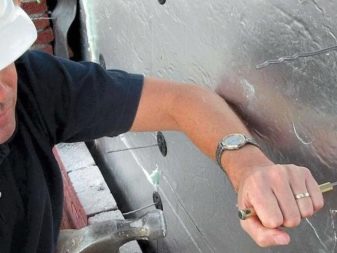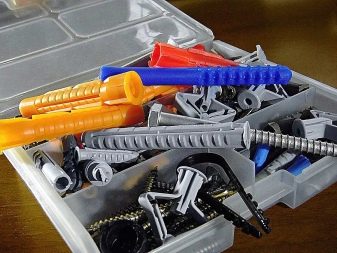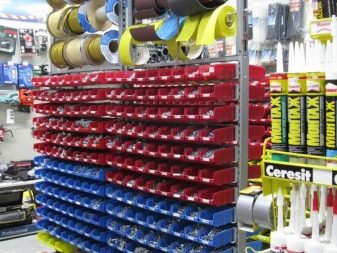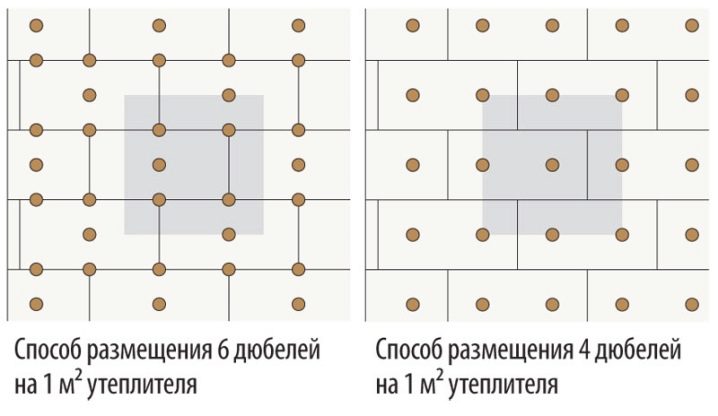Front dowels: types, dimensions and characteristics
The use of insulation helps reduce heat loss through the walls by 15 - 20%. For high-quality installation of thermal material use special connecting products. Dowels for the facade are designed for attaching insulation to the outer walls of public buildings and houses. They are also used as fasteners for various designs.
What it is?
Front dowel is a fastener consisting of a strut, retainer and anchor. The expansion part is made of fiberglass and serves as a core for various fasteners. The design of the spacer fixes fasteners in one position.
Depending on the purpose, the construction can be with a screw or a nail. Screws are covered with an anti-corrosion layer. Nails protect against corrosion by galvanizing. Thanks to the retainer on the base of the dowel, it does not sink into the hole. Plastic clamp presses the insulating material. The larger the diameter of the cap cap, the better the fixation. The anchor is located at the bottom of the structure, it looks like a sleeve with grooves. Anchor dowel consists of polyamide.
The dowel for the facade has a long rod, which serves to clamp the material of great thickness. For a more reliable fixation in the depth of the bearing wall, the structural elements can be equipped with notches and antennae.
With the help of facade fasteners fix insulation panels, guides of wooden and aluminum profiles, mounted structures, brackets, frame prefab facade.
The use of dowels helps to avoid loosening and loss of nails and screws from the drilled holes.
Specifications
The manufacture of facade fasteners must comply with the standards of GOST 56707-2015 for facade thermal insulation systems. According to the requirements, products must be fireproof, resistant to climatic influences, impact-resistant and frost-resistant.
Dowels for facades are characterized by the following indicators:
- There is a high degree of adhesion with any base material.
- Products possess resistance to temperature differences from -40 to +80 degrees.
- The plastic base does not react to moisture, the metal rod undergoes anti-corrosion treatment.
- Reliability and rigidity of fixation is guaranteed by anchoring and spacer construction.
- Polymer elements and rods with a thermal head have low thermal conductivity.
What are the?
Front dowels differ in several ways:
- production material;
- structure;
- application;
- dimensions.
Front fasteners are made of artificial polymers. For each individual part of the fastener serves as raw material a different composition. Polypropylene and nylon can be used as a material for manufacturing. Nylon plugs are supplemented with a metal rod. They withstand a load of 200 to 400 kg for various reasons.
Nylon is durable, resistant to abrasion, does not crack from sudden temperature changes, does not stretch. Polypropylene fasteners will not be able to keep the load of more than 70 kg, they are afraid of temperatures below -20.
According to the structure
The type of structure determines the external structure of the individual elements of the dowel. Depending on the size of the latch emit disc and anchor type of structure. Anchors are used for mounting structural elements to the facade. The anchor design consists of a nylon or polypropylene dowel with a screw.
The head of the screw can be of different shapes: straight slot, cross-shaped, hex.
At the facade anchor of the Tech-KREP TSX PRO brand the slot is made in the form of a six-pointed star. The anchor front dowel is firmly fixed in the hole with stiffeners, edge petals do not allow the fixture to move in a circle. On the dowel type RDF there is a stopper board, the type RDR without side will help to deepen the anchor into the material. Using Mungo MBK S TB fasteners will increase downforce without damaging the base with a locking screw with a press washer.
The disc-shaped facade structures fix heat-insulating materials.
Dish fasteners are of three types:
- with a plastic nail;
- with a nail made of metal;
- composite
In fasteners with a plastic nail a polymer pin acts as a rod.The raw materials for its manufacture are nylon, polystyrene, basalt plastic. Dowels with a nail made of plastic fix lightweight insulation on the base of hollow brick, foam concrete, gas silicate. Fastening efficiency will remain, if the dowel length will not exceed 16 cm.
The use of this type of fastener has many advantages:
- They are not afraid of moisture, which eliminates the appearance of rust.
- The minimum weight does not bear the load on the supporting wall structure.
- A low coefficient of thermal conductivity of plastic will not allow to lower the temperature at the point of attachment.
- Products have low cost.
The disc design with a metal nail is durable and reliable. They are used to fasten heavy insulation on a dense base of concrete. The nail is made of steel, often the surface is zinc coated or coated with an anti-corrosion compound. The size of the fastener can reach 30 cm.
The metal rod reduces the insulating properties of insulation in the place of fasteners, because it conducts well low temperatures. To reduce thermal conductivity, nails are equipped with a thermal head made of polyamide materials.Thermal head on the base of the nail does not allow to carry the cold deep into the wall, additionally protects the metal body from rust.
Composite dowel is a fastener with a core of fiberglass, additionally equipped with a washer. The anchor part is 6 - 10 cm, which allows you to install fasteners in any base. The length of the whole structure can reach 60 cm, suitable for any layer of insulation. With the help of a washer, the diameter of the clamp increases to 10 cm.
By application
Facade dowels are mainly used for mounting curtain walls and fixing insulation to the wall. For fixing the insulation used dish-shaped connections. Anchor facade fasteners are used for fixing canopies, brackets, mounting laths and guides of wood or metal. Frame dowel is used to assemble door frames and window frames.
The use of different types of fasteners depends on the base material. Dowels with anchor zone 4 - 5 cm are used for fixing in brick and concrete. For aerated concrete and foam blocks, the anchor part is 6–7 cm. The rod may be plastic or metal. When mounting on a hollow brick or plaster anchor length must be up to 8 cm.
In size
The dimensions of the fastener are made up of all parts of the constituent elements.The dowel diameter of the standard value is 1 cm. The latching cap of the disc design is 6 cm in diameter. When using an additional clamping nut with a size of 1 x 80 mm, the fixing area will increase.
Each product has a marking, which shows the dimensions of the fastener.
The length of the front dowel is selected based on the thickness of the insulation. If the thickness of the heat insulating layer of the wall is 70 mm, then the size of the dowel should be 10x120 mm. A layer of mineral wool at 19-20 cm will hold fasteners the size of 10x240.
The average thickness for insulation foam or extruded polystyrene foam is 5 cm. They are fixed with dish-shaped dowels with a plastic nail 10x100 mm or 10x115 mm. The size of the rod will be 8x100 mm.
Manufacturers Rating
Dowels of foreign and domestic manufacturers are represented on the Russian market. In terms of quality, Russian production is catching up with foreign analogues. The difference between them, above all, in price.
A popular supplier of dowels for the facade to the market is a fiberglass plant in Biysk. Production differs in low heat conductivity due to fiberglass material of production.The product range consists of fasteners of various lengths with an anchor area of 50 and 80 mm and a cross section of 1 cm, 5 mm, 7 mm, intended for fixing any insulants into the bases of different density. The standard diameter of the cap is 6 cm.
About a quarter of the fastener market is held by the Tech-Krep trade and production association. The company manufactures products with a plastic nail izo, a galvanized nail izm, a shock-resistant polyamide head izl, a steel nail and a protective cover izr. Different lengths of the rod can fix a warming layer from 5 cm to 24 cm. The anchoring part is from 4 to 6 cm.
For fastening insulation up to 15 cm using fasteners with a plastic nail. Metal nails are used for materials up to 24 cm thick. The protective thermal head allows you to avoid corrosion during the subsequent plastering of the facade.
Under the Termozit trademark, front dowels are on the market. with a multi-colored thermohead on a galvanized nail. The polyethylene head on the rod prevents corrosion and cold bridges at the attachment point. There are models of products with an anchor base from 40 to 70 mm. The length of the structure varies from 95 to 300 cm.
The Russian company ELEMENTA specializes in the production of anchor facade fasteners of four brands. The modification of the EFA-F is characterized by the presence of a galvanized screw with increased strength. The EFA-FH and EFA-FCH brands have screws with an anti-corrosion coating of strength 6.8 and 8.8, respectively. Brand EFA-FA4 represents products with stainless steel screws.
Foreign manufacturers in the domestic market are represented by the Sormat, Mungo and Fischer brands. The company from Germany "Fischer" supplies front dowels with a nail, a screw and a washer with a hexagon. Fasteners are made of nylon and comply with European requirements for installation products.
Finnish manufacturer Sormat manufactures products with a high wedge area. This allows you to securely fasten the material on any surface. The spacer design with a 115 mm screw with a hexagon in the base is intended for fastening consoles and brackets.
The famous supplier from Switzerland is Mungo. On the market offers three varieties of its products. A dowel with an MBR screw is suitable for mounting on solid substrates made of concrete and brick. With an enlarged area of the anchor, MV fasteners are available for hollow bearings. The universal design of the MQL brand is able to fix the insulation on any basis at the expense of four wedges of different distribution.
How to choose?
The strength of the installation of the facade structure and heat insulation materials will depend on the correctly chosen fasteners.
The choice of a particular front dowel will depend on:
- base material;
- dimensions and type of thermal insulation;
- climate of the area;
- altitude.
The basis for fixing can be made of aerated concrete, solid brick, silicate brick, concrete, hollow brick, plaster, wood, foam concrete. Each material has its own density, which determines the strength of the connection. The porosity of the base, the greater the length of the anchor zone of the fastener hardware with reinforcement of the spacer, supplemented by notches.
The thickness of the spacer and the length of the rod will differ from the thickness of the insulation. If the insulation layer is 4 cm, then the dowel should be 9 cm long. With a maximum insulation thickness of 24 - 25 cm, a rod 30 cm long will do. Anchoring depth varies from 4 to 6 cm.
Lightweight artificial insulation materials made of polystyrene and polyurethane are mounted with a plastic nail construction. Mineral wool, capable of absorbing and retaining water in the structure, is fixed with dowels with a metal rod, preferably with a corrosion-resistant coating and thermal head.
In order to securely fix various heat-insulating materials on the facade of buildings, it is necessary to select facade fasteners in accordance with the climate conditions in the region. In case of frequent windy and stormy weather, it is necessary to increase the length of the anchor part of the dowel. With a large weight of insulation provides increased mounting per square meter design.
For low-rise private construction suitable universal dowels with a standard load. With a larger number of floors, fasteners for the facade should have increased technical characteristics of structural strength and strength to extract from the base.
When choosing dowels for the facade of their value is not a decisive component. It depends on the basis of raw materials, the size of the procurement lot and the technical indicators of the product. The price of one unit of the product varies from 3 to 55 rubles. The number of pieces is determined by the mounting area.
To purchase durable suitable dowels on average, you can spend 300 rubles per 10 square meters. The total cost of fasteners, as compared with facade finishing materials, is the lowest.
Material Tips
Installation of the front dowel is not difficult and can be done independently. Warming of external walls and facade finish should be carried out in dry weather at a temperature of from +10 to +30 degrees. It is necessary to conduct a preliminary count of the number of facade dowels. It depends on the weight and size of the insulation panel, the number of sheets of material, the area of the facade.
For various mounting options, 4 to 10 fasteners are used per square meter. In order to increase the degree of pressure of the heat insulating material against the wall, the fastening element is placed at the junction of the plates.
Depending on the material of the base of the walls, the holes for the dowel can be drilled with a drill or drilled with a perforator. The diameter and size of the drill fit the diameter of the anchor zone and the length of the product. They work with the tool at right angles, deepening the thickness of the insulation and the length of the anchor part in the wall. Dust should be removed from the drilled channel.
A dowel without a rod is mounted in the hole. The cap should be in the same plane as the heat insulator or slightly buried. Then set the screw or nail. The rod must fully enter the expansion part of the dowel.
Next, see the review of the front dowels Russian manufacturer.
